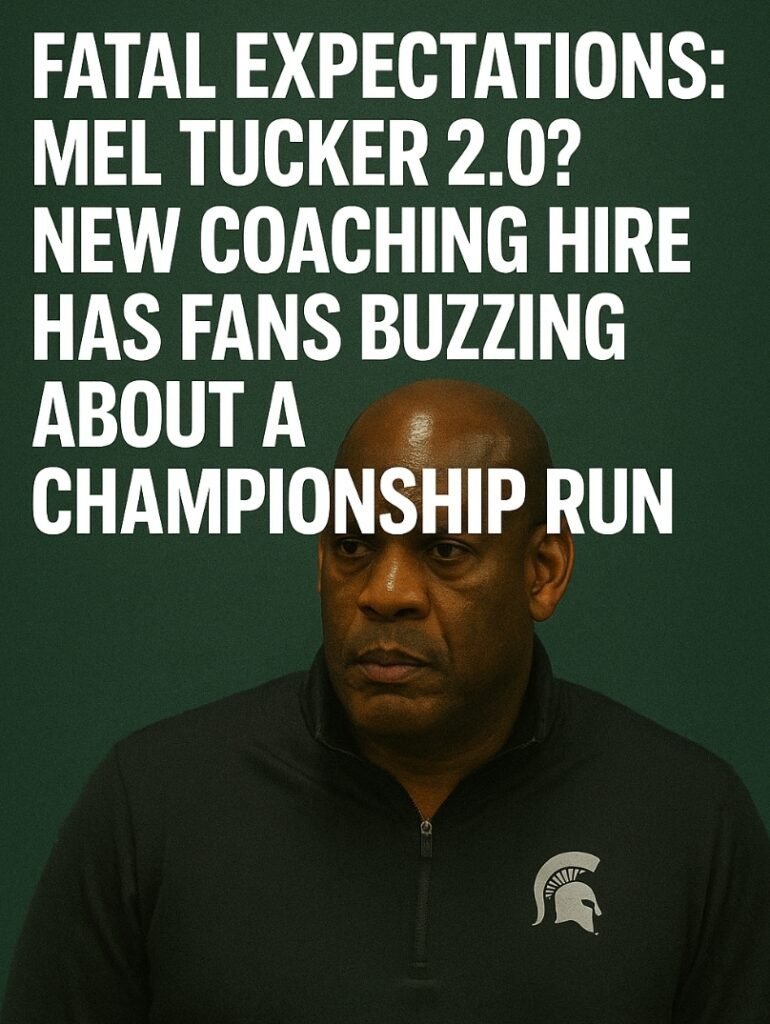EAST LANSING, Mich. — On a humid June evening outside HopCat on Grand River, the TVs are locked on a replay of spring practice, but nobody’s really watching the drills.
They’re watching him: Jonathan Smith, the 45-year-old architect of Oregon State’s turnaround, now charged with hauling Michigan State back from the wreckage of the Mel Tucker era. The irony isn’t lost on die-hard alumni nursing their Green Line IPAs. “We’ve been here before,” mutters ’04 grad Alicia Martin, eyes still bright with hope. “But something about Smith feels… steadier.”
Steadier, yet the expectations are anything but. Athletic director changes and an impatient fan base have accelerated the timeline. Vegas may have opened with a modest 4.5-win over/under, but inside the practice facility the talk is unapologetically bigger: December trips to Indianapolis, maybe even Pasadena. Smith isn’t fanning the flames outright, but he’s not dousing them either. “If you come to East Lansing, you come to compete for titles,” he said at his April presser, stressing a blend of portal veterans and home-grown sophomores.
Quarterback Aidan Chiles embodies that blend. The red-shirt sophomore followed Smith from Corvallis and, after a bumpy debut season, now looks like the Big Ten’s breakout candidate. Smith scrapped the old playbook for a quick-strike West Coast look, designed to let Chiles dictate tempo at the line. Tight end Jack Velling, another Pacific-Northwest import, calls it “organized improv.” “Coach gives us rules,” Velling laughs, “but there’s room to paint.”
Fans see echoes of Tucker’s 2021 magic, when Kenneth Walker III turned a transfer-portal gamble into an 11-win revelation. Yet they also remember the crash: lawsuits, disarray, and back-to-back losing seasons. That’s where Smith’s reputation for culture-building matters. At Oregon State he built a lunch-pail identity before the nation noticed; at MSU he inherits a program starved for exactly that. “He’s Mel Tucker without the flash—thank God,” says former offensive lineman Jared McGaha, now coaching at Lansing Everett. “Substance wins long term.”
Still, the urgency is real. Smith’s staff added eight FBS starters in May alone—four defensive backs, two interior linemen, a bruising tailback, and a 6-foot-6 edge rusher from UT-Martin—telegraphing a win-now posture. Rival recruiters whisper that Michigan State is “renting” production, but inside the building the mantra is “bridge the gap.” Defensive coordinator Trent Bray, another Beaver transplant, explains: “The kids we recruited in December will own this program in 2027. Our job is to make sure the stage is still big when they’re ready.”
Can they really fast-track the climb? A gauntlet looms: at Washington in Week 2, home against Ohio State on October 18, and a Black Friday showdown in Ann Arbor. “Nobody’s crowning us,” Smith concedes, “but nobody in that locker room thinks six wins is the ceiling.”
Back at HopCat, the crowd erupts as Chiles hits Velling on a deep post in the practice replay, a roar far too loud for a June scrimmage. It’s not just the play; it’s the possibility. For a fan base bruised by recent history, possibility is fuel, but it can be fatal too. Mel Tucker 2.0? Maybe. But if Jonathan Smith’s blueprint holds, Spartan Stadium might finally trade its scars for banners—and this time, they hope, the foundation will last.

